Thought red was too overpowering? These calming red room ideas from interior designers will prove you wrong
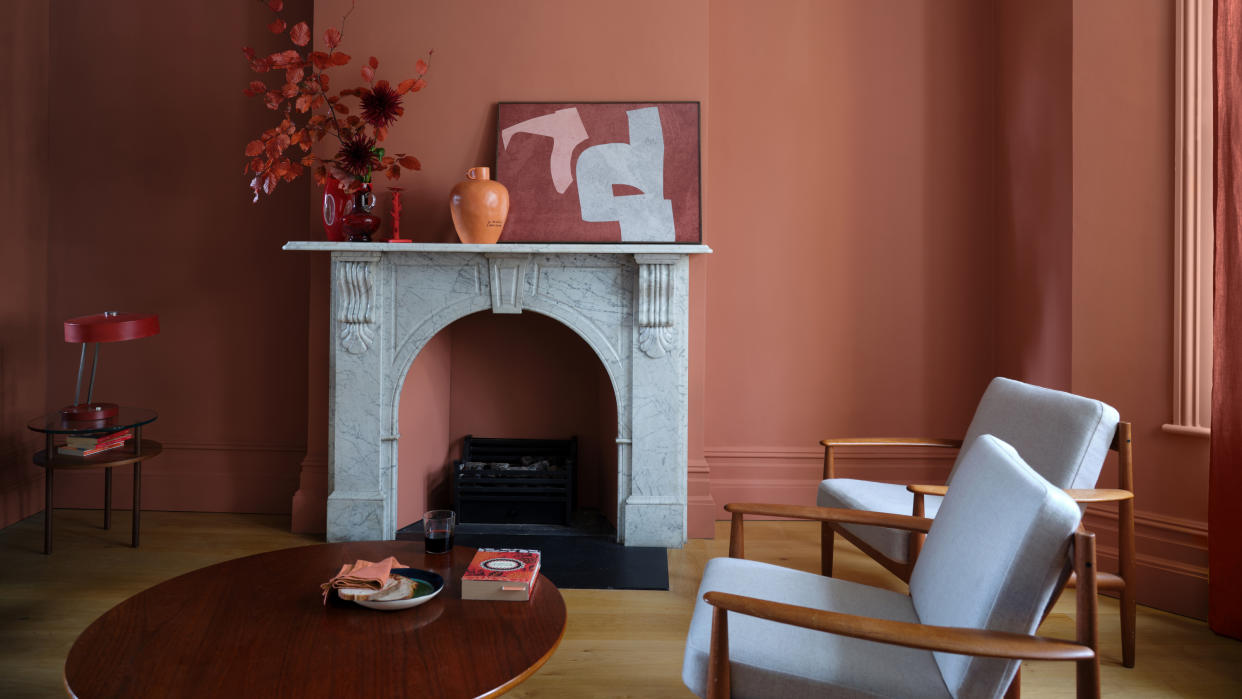
If red is one of those colors you just can't quite bring yourself to incorporate into your home, you're not alone. Thanks to its association in color psychology with energy, action and even danger, it's rarely the first hue we think of when we're designing our homes – after all, we usually want our spaces to be calm and restful.
‘Red can attract a lot of attention and is typically associated with strong emotions, such as love, passion and anger,’ says Mike Fisher, founder and creative director of Studio Indigo. However, we're here to tell you that red can be a calming shade if it's used right – softer, more muted shades with blue undertones, like burgundy or raspberry, in particular have a place in a relaxing scheme.
We've rounded up 10 relaxing red room schemes to prove that this is a color idea to take seriously – and spoken to the interior design experts to find out just how to use this shade for a soothing space.
1. Incorporate red stone into your design
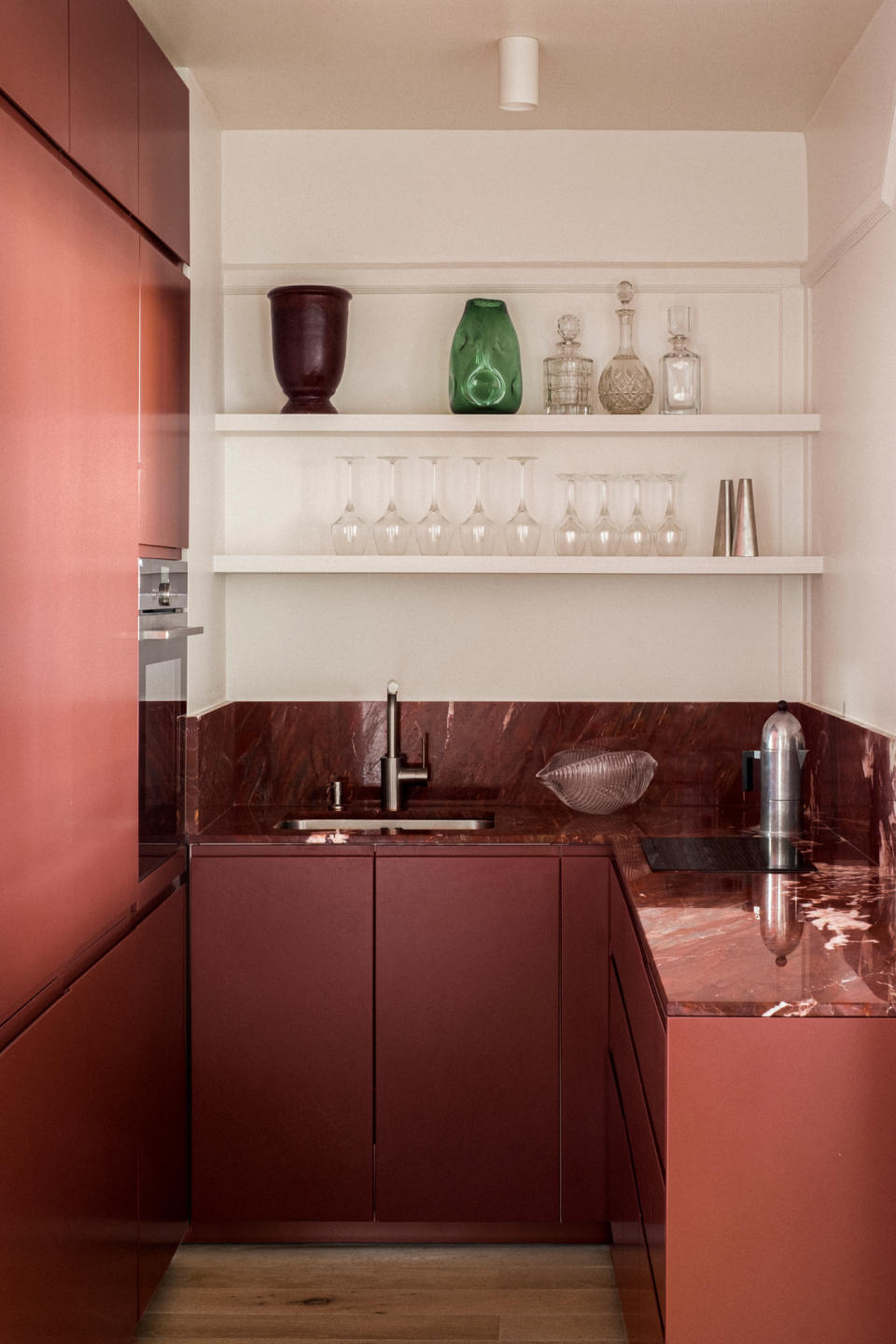
In a small kitchen, like this one by Parisian practice Agence Volta, a deep red shade on units can make the space feel instantly more luxe – and when paired with white walls, still feels bright enough for a task-oriented space. But it’s the shock of red marble on the countertops that makes this room stand out – a textural touch that makes the scheme feel grounded and calm.
2. Opt for a red-toned wood

Okay, so you’re a little scared to commit to painting your walls red – but how about integrated red-toned wood into your scheme instead? It’s a gentler, more subtle way to approach a red room, but has a similar effect to a deep red paint with the added benefit of the grounding texture wood offers. In this living room by Texas design studio Ashby Collective, the tone of the bookshelves is repeated in the Persian rug; the rest of the walls are painted white to help reflect light around the space.
3. Use a terracotta shade
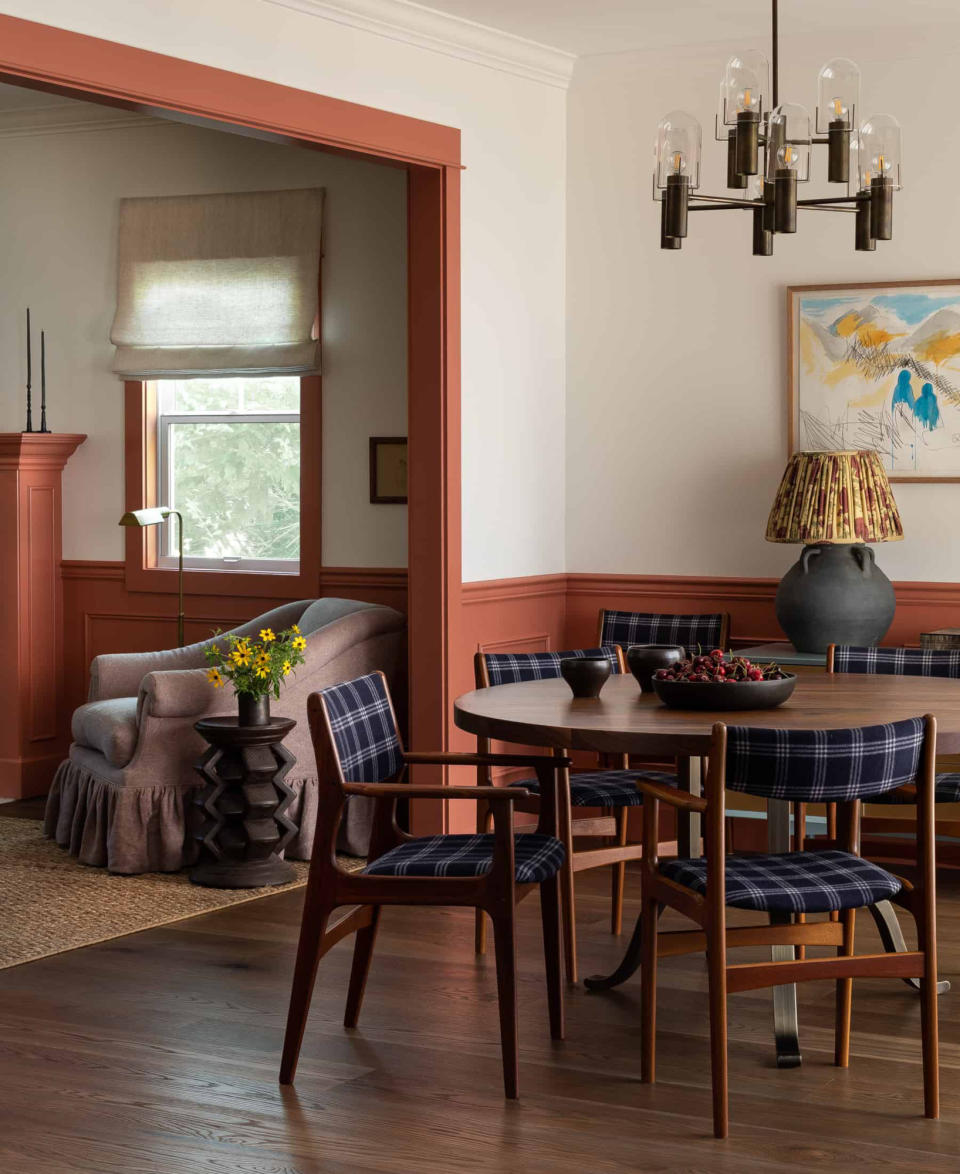
The shade of red you use has a big impact on how your room feels. The connected living-dining spaces of this home by Seattle designer Heidi Caillier feature panelling and woodwork painted in a terracotta shade. The effect is a soothing one, especially paired with dark wood and blue upholstery – blue being a color that complements terracotta.
‘Reds come in various shades, and some, like fire engine red and cherry red, can be very stimulating and overpowering when used excessively,’ explains Artem Kropovinsky, interior designer and founder of New York studio Arsight. ‘For a more tranquil atmosphere, choose gentler red shades such as burgundy, terracotta, or rose.’
4. Incorporate red into shelving

Furniture and open shelving can help to break up an all-red space, offering moments of respite that help dial down the intensity of the room. ‘Overusing red can lead to an overwhelming atmosphere and provoke anxiety,’ says Artem Kropovinsky. ‘Instead, use red as an accent color to infuse warmth and vibrancy into the room.’
In this space by New York's Studio Giancarlo Valle, red is a little more than an accent, sure – but by incorporating it into the alcoves, carpet and ceiling, broken up by oak shelving and a neutral sofa, it feels cozy and relaxing rather than overwhelming.
5. Go for an all-over cocooning effect

That said, there’s no reason you can’t go all-out in a red room and still make it feel calming – it all depends, again, on the shade you use. Cooler, more muted tones will help the space feel more relaxed, even if you’re painting walls and ceilings the same color. ‘These shades will add a subtle warmth and depth to a space without feeling too overpowering,’ says London interior designer Rudolph Diesel.
6. Use a textured paint finish
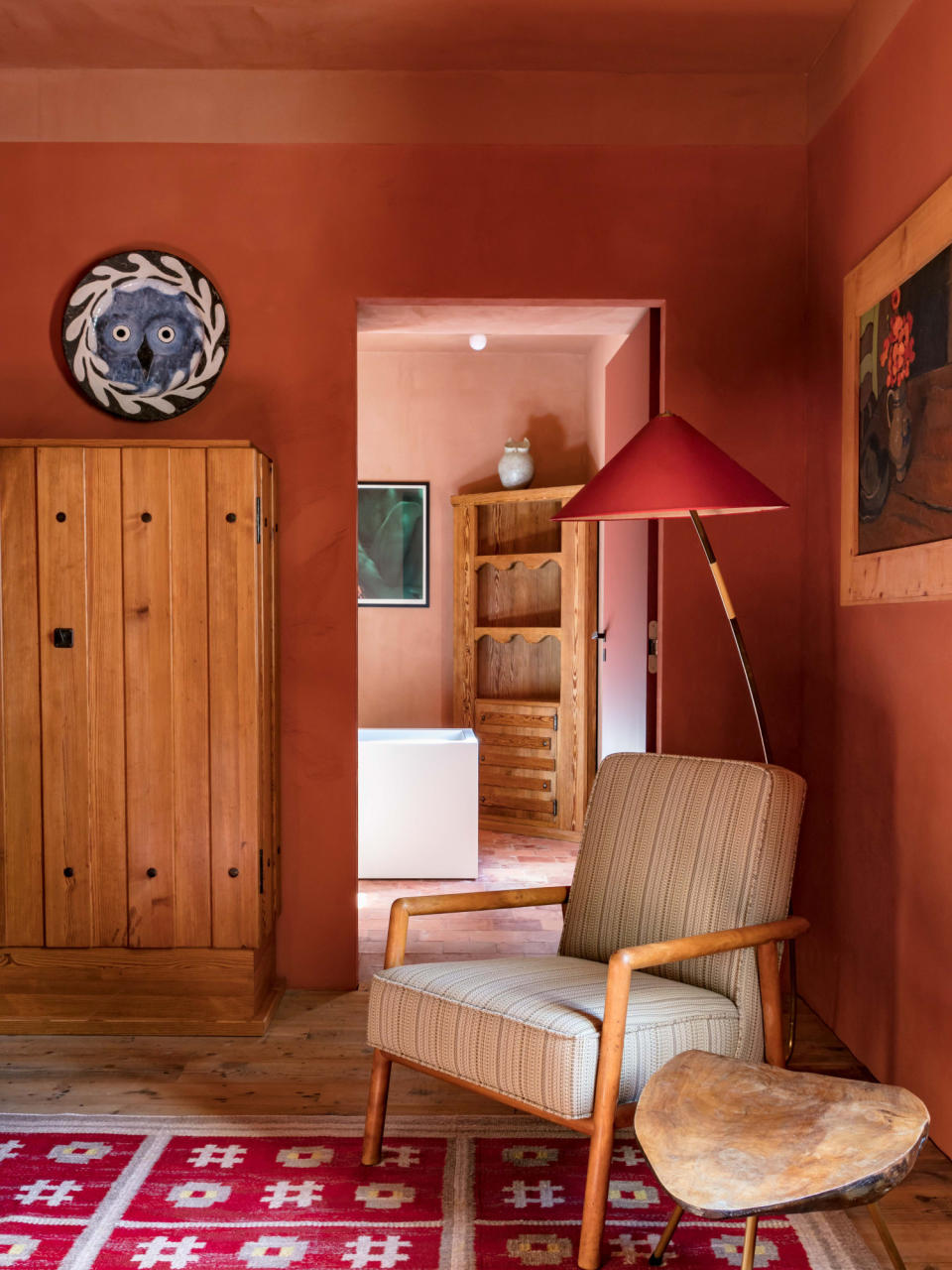
‘Texture can diminish the impact of red and foster a more serene atmosphere,’ says Artem Kropovinsky – and this living space by noted French designer Pierre Yovanovitch is proof. It uses a textured terracotta-red paint, with a slightly lighter tone for the ceiling, to incorporate this rich shade in a softer way. Wood tones and soft finishes – like the upholstered armchair and rug – help to moderate the space further. ‘Incorporate pillows, throws, and other textured items in calming colors to create a welcoming environment,’ adds Artem Kropovinsky.
7. Be careful with your color pairings
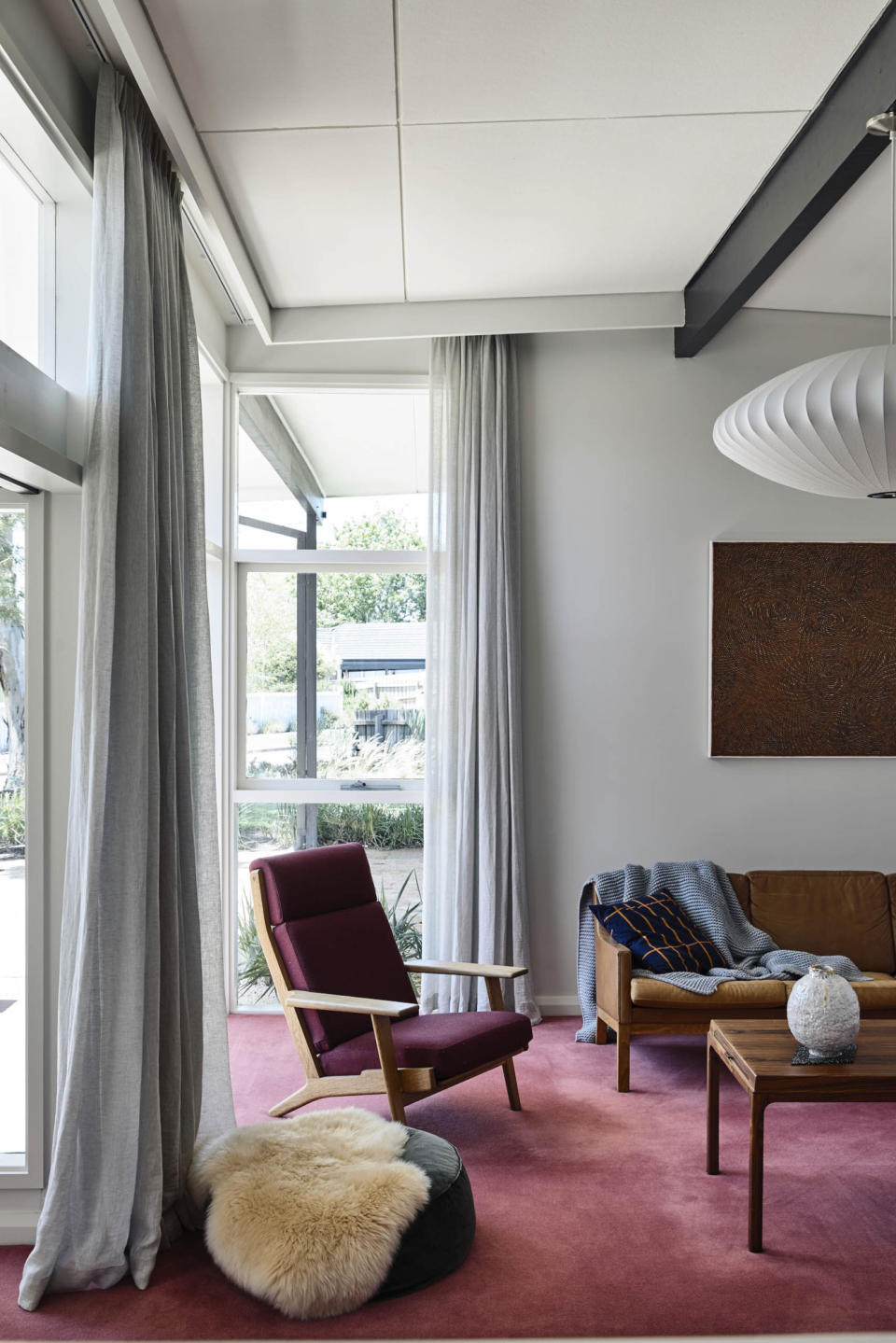
The feel of your room will depend on the colors you pair with red as well as the shade itself. In this space, designed by Australian practice MRTN Architects, a wine red carpet – bold on its own – is contrasted with pale grey walls, deep-toned wood furniture and accents of blue, which together offer a laid-back scheme.
‘When pairing red with other colors, neutrals work best,’ says Rudolph Diesel. ‘Soft beige or cream tones will create a relaxing atmosphere, and if you want to add a bit of drama, you can introduce a darker shade such as navy blue – this will create a bold contrast that will add visual interest to the space.’
8. Bring red in with a subtly patterned paper
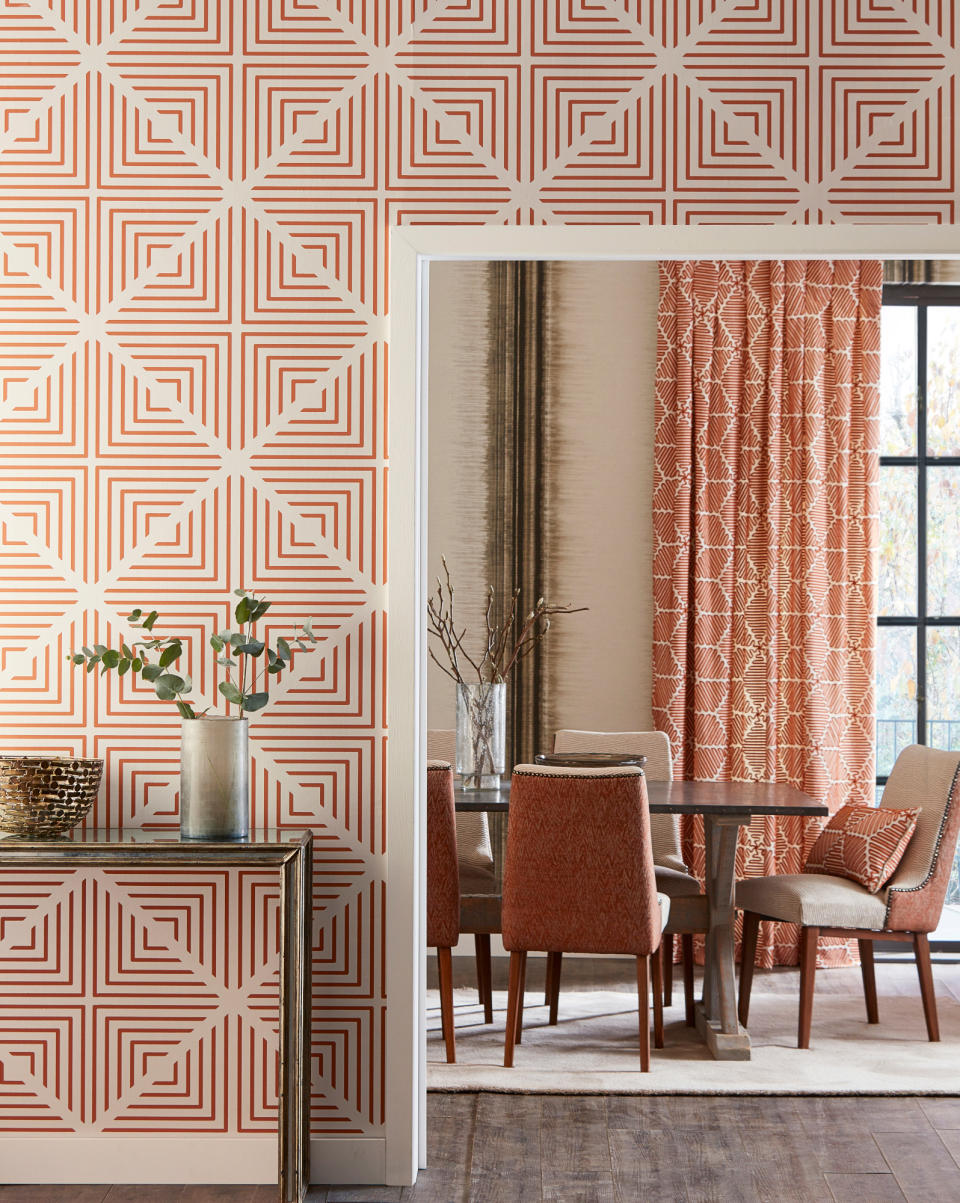
Red can play a leading role in a room through pattern, so don’t shy away from prints – in fact, introducing the color in this way can be a good starting point, as the red is balanced out by the other tones in the paper or fabric. This geometric design from wallpaper and fabric brand Harlequin, mirrored by drapery in the dining room, is perfectly balanced thanks to the warm white base.
‘Red is a great counter-balance color – you can use it as the second or third color in a room, or on a single piece as a pop, and still maintain a calming effect,’ explains Claudia Kalur of Connecticut studio CFK Interiors. ‘It's the perfect add-on color on a patterned fabric, whether more modern, like a graphic or geometric, or more traditional, like a large floral or a small print.’
9. Use deep red for a soothing bedroom

We’ve talked a lot about terracotta, but deep reds can also play their part in a calming colors to paint a bedroom – though these shades are better suited to rooms you don’t mind feeling smaller. That’s because red as a dominant color can have a shrinking effect, explains Mike Fisher of London's Studio Indigo, who designed this bedroom. ‘For rooms on the smaller side, we suggest adding mirrors to make the space feel bigger yet still keeping a warm, comforting cocooning effect,’ he says.
10. Add a wall mural in muted tones

It’s no secret that we love a wall mural idea here at Livingetc – and it can be a great way to introduce red to a scheme (even brighter reds) without energizing the space too much. Take your cue from this dining room, featuring an abstract mural of red, plaster pink and black blocks of color.
‘For a calming scheme, it’s best to choose colors that help balance the red,’ says Mike Fisher. ‘Neutral colors like white and beige can work well, for example. We love to use cherry and burgundy reds in neutral spaces to add interest and character through accent details, such as curtains or pillows. For a different take, pairing red with greens and blues can also create a calming atmosphere.’
3 of the best red paints

Picture Gallery Red, Farrow & Ball
A warm, sophisticated red that works just as well in a contemporary color scheme as a traditional one. It's orange undertones make it particularly cozy.

Self Portrait, Backdrop
A sophisticated jewel-tone, this burgundy paint color delivers on the drama, while not bringing as much energy as a more primary red color.

Red 04, Lick
This paint color from online upstart Lick is the perfect approach for a ground, earth-tone to complement an otherwise neutral color palette.